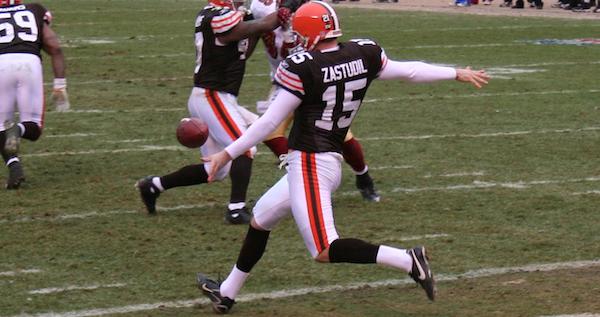Dear Sports Fan,
I don’t get why some people find punts exciting. Isn’t a punt basically a negative thing? It happens when a team decides they can’t advance the ball anymore and instead of trying, they punt. How are punts in football exciting?
Confused,
Connie
— — —
Dear Connie,
You’re absolutely right that punts only happen when one team decides they cannot advance the ball anymore and instead of risking giving the ball to the other team where it currently is, they choose to trade field position for possession and give the ball up. This doesn’t mean it’s not exciting though. In fact, I think the punt is one of the most exciting plays in football and I’m happy to explain some reasons why. If you missed our post yesterday on how punts work, you might want to brush up on that before you read this one. Don’t forget to come back though!
Why the punt is exciting for the receiving team
The receiving team starts out pretty excited about the punt because it means they’ve succeeded on defense. They prevented the opposing team from scoring or even moving the ball ten yards to get a new first down. It’s also exciting because it means they’re about to get the ball back. The excitement doesn’t stop there though, because if they play the punt return right, they might even score on that play!
Although it may look a little chaotic, every player on the field while their team returns a punt has a very precise mission. First, the receiving team tries to worm through or around the guys protecting the punter to see if they can block the punt before it gets going.
If that doesn’t work, and it normally doesn’t, the players switch over to slowing down the opposing team’s players so that their punt returner has room to catch the ball and doesn’t need to call for a fair catch. Then, once the punt returner has caught the ball, the other players on his team turn into blockers — trying to prevent the kicking team’s players from hitting him and also trying to shove them around to create running lanes for the returner. This sounds like a thankless job, and a lot of times it is, but once in a while, someone blocking for a punt returner will make a block so spectacular that the crowd roars in appreciation. Of all the hits in football, hits while blocking for a returner can be among the most violent because of the speed and the potential to hit someone who is focusing on something else. Here’s an example of a player getting “decleated” on a punt return:
Once a returner catches the ball, he takes off like a wild deer and sprints upfield, dodging and spinning and hurtling until he’s either caught and tackled or scores a touchdown. Punt return touchdowns are among the most exciting in the game. Take a look at this one from the Dallas Cowboys and watch how all the players on their return team block for punt returner Dez Bryant:
Sometimes, even when the blocking fails, a supremely talented and fearless punt returner can create a touchdown on his own. These are the most exciting punt return touchdowns. This one from Dante Hall in 2003 has stuck in my memory as being one of the best I’ve ever seen:
That type of return is few and far between, but the potential is there on every punt. That’s what makes the punt so exciting for the return team.
Why the punt is exciting for the kicking team
The punt can be very exciting for the kicking team because they have clear goals that take extreme coordination, precision, and often a little bit of luck. They also have things that they don’t want to have happen. The good outcomes are often incredibly close from the bad outcomes. For instance, the punting team might be aiming to kick the ball out of bounds at the two yard line because then the opposing team has to start from their own two yard line on offense. If the ball flies an extra two yards, and goes out of bounds in the end-zone, it’s a touchback and the receiving team gets the ball on their twenty yard line. The same thing holds with a punt that bounces around within the field of play. If it goes into the end-zone, the receiving team starts on the twenty. If it stops on the one… that’s a nineteen yard advantage for the kicking team. Here, the kicking team can do something to aid their own cause. If they can run down the field in time to do it, they can grab the ball before it rolls into the end-zone or even bounce it back to one of their teammates. This can be an exciting adventure because it involves players trying to control a frustratingly oblong bouncing object after sprinting for fifty or sixty yards. Here’s a great example of a punt that the kicking team saved from bouncing into the end zone:
Another strategy is to aim for a corner of the field so that it either goes out of bounds or it’s harder for the punt returner to find space to dodge around the guys trying to tackle him. This strategy is called a “coffin corner” punt. Here’s a great example of a successful one:
Playing on the unit that covers punts for the kicking team can also be exciting because you and your buddies get to (if all goes well) tackle the punt returner. If you like playing football, it’s probably in part because you like to hit people in a completely sanctioned way. It’s pretty satisfying to watch too unless it gets too violent. Here’s a prime example of good punt coverage that ends in a decisive but not cringe worthy hit:

